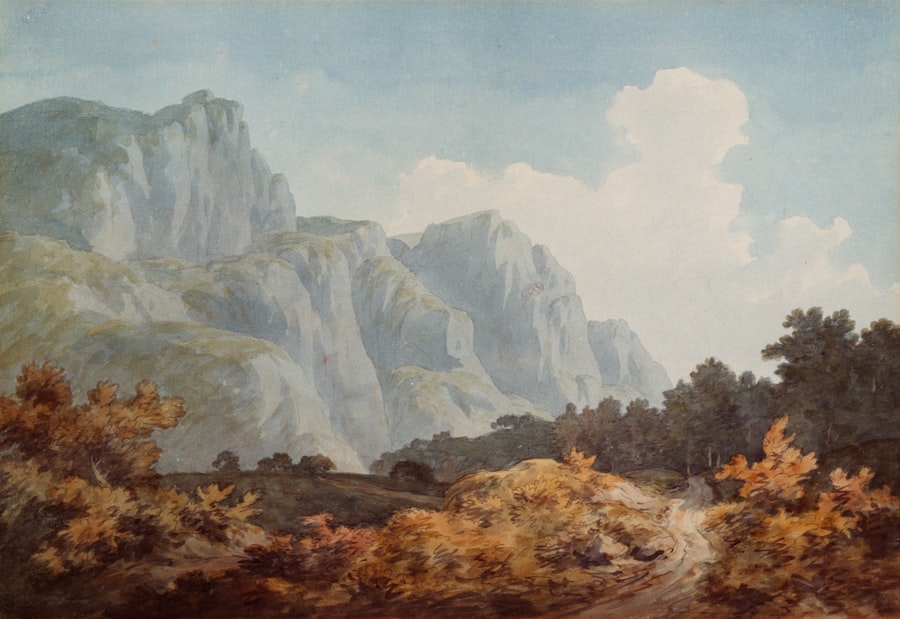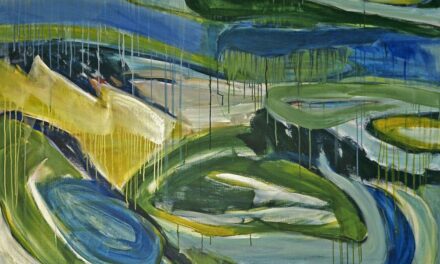Edvard Munch was born on 12 December 1863 in Løten, Norway. He was the second of five children born to Laura Catherine Bjølstad and Christian Munch, a military physician. Munch’s early life was characterised by tragedy, as his mother succumbed to tuberculosis when he was merely five years old, and his father passed away when he was 14.
These early losses significantly influenced Munch’s art, as themes of illness, death and existential anxiety would become recurrent motifs in his work. Munch’s artistic talents were apparent from a young age, and he received encouragement from his father to pursue a career in the arts. He initially enrolled in technical college to study engineering but subsequently transferred to the Royal School of Art and Design in Oslo to pursue his passion for painting.
Munch was heavily influenced by the Symbolist movement, which aimed to convey emotional and psychological truths through art. He was also inspired by the work of the Post-Impressionists, particularly Vincent van Gogh and Paul Gauguin, whose use of bold colours and expressive brushwork would have a lasting impact on Munch’s own artistic style. Munch’s early experiences with illness, death and the emotional upheaval of his upbringing would shape his artistic vision and lay the foundation for the deeply personal and emotionally charged work that would define his career.
Summary
- Edvard Munch was born in Norway in 1863 and was influenced by the early deaths of his mother and sister, as well as his father’s religious fervour.
- His breakthrough came with his iconic painting “The Scream”, which captured the anxiety and existential dread of modern life.
- Munch’s art often explored themes of love, death, and anxiety, with symbolism such as the use of vibrant colours and distorted figures.
- The artist struggled with mental health issues and addiction throughout his life, which often influenced his work.
- Munch’s legacy is seen in his influence on modern art movements such as Expressionism, and his works are held in major collections around the world.
Breakthrough and The Scream
The Birth of an Icon
This painting, which depicts a figure on a bridge clutching their face in anguish, has become an iconic symbol of existential dread and has been widely interpreted as a representation of the anxiety and alienation of modern life. The bold colours, swirling lines, and distorted figures in “The Scream” marked a departure from traditional naturalistic representation and established Munch as a pioneer of Expressionism.
A Pioneer of Expressionism
The success of “The Scream” brought Munch international recognition and solidified his reputation as a leading figure in the avant-garde art world. He continued to explore themes of love, death, and the human condition in his subsequent works, often drawing on his own experiences and emotions to create deeply personal and evocative images. Munch’s use of symbolism and psychological depth set him apart from his contemporaries and established him as a visionary artist whose work transcended traditional artistic boundaries.
A Lasting Legacy
“The Scream” remains one of the most recognisable and influential works in the history of art, and its impact on the development of modern art cannot be overstated. Munch’s ability to capture the inner turmoil of the human psyche in a visually arresting and emotionally resonant manner cemented his place as a revolutionary force in the art world.
Themes and Symbolism in Munch’s Art

Munch’s art is characterised by its exploration of universal themes such as love, death, anxiety, and existential angst. His work often delves into the darker aspects of human experience, reflecting his own struggles with mental health and personal tragedy. Munch’s use of symbolism and expressive brushwork allowed him to convey complex emotional states and psychological truths in a way that resonated deeply with viewers.
One recurring motif in Munch’s art is the depiction of women, often portrayed as enigmatic and mysterious figures. His use of colour and form to convey the inner emotional states of his subjects was groundbreaking for its time and has had a lasting impact on the development of modern art. Munch’s ability to capture the fleeting nature of human emotion and the fragility of life through his art has made him a revered figure in the history of art.
Munch’s work also reflects his fascination with the natural world and its capacity to evoke profound emotional responses. His use of bold colours and dynamic compositions imbued his landscapes with a sense of vitality and emotional intensity, further underscoring his ability to convey the inner workings of the human psyche through his art.
Personal Life and Health Struggles
Munch’s personal life was marked by a series of tumultuous relationships and struggles with mental health. His experiences with love and loss would become central themes in his art, as he sought to grapple with the complexities of human emotion and relationships. Munch’s own battles with depression and anxiety were reflected in his work, which often depicted scenes of isolation, despair, and emotional turmoil.
Munch’s health struggles also had a profound impact on his artistic output. He suffered from chronic anxiety and alcoholism, which further exacerbated his mental health issues. Despite these challenges, Munch continued to produce a prolific body of work that pushed the boundaries of artistic expression and challenged conventional notions of beauty and representation.
Munch’s personal struggles with mental health and addiction have led to renewed interest in his work from a psychological perspective, as scholars seek to understand how his inner turmoil shaped his artistic vision. His willingness to confront difficult emotions and experiences through his art has made him an enduring figure in the history of art, as his work continues to resonate with audiences around the world.
Legacy and Influence on Modern Art
Munch’s impact on the development of modern art cannot be overstated. His innovative use of colour, form, and symbolism paved the way for future generations of artists to explore new modes of expression and representation. His ability to convey complex emotional states through his art has had a lasting influence on the development of psychological realism in painting.
Munch’s work also played a crucial role in the evolution of Expressionism, a movement that sought to convey subjective emotional experiences through art. His bold use of colour and expressive brushwork set a new standard for artistic innovation and paved the way for future generations of artists to explore the inner workings of the human psyche through their work. Munch’s legacy is also evident in the enduring popularity of “The Scream,” which has become an iconic symbol of modern art.
Its influence can be seen in the work of countless artists who have sought to capture the complexities of human emotion and existential angst in their own art. Munch’s ability to tap into universal themes and emotions has ensured that his work remains relevant and influential to this day.
Notable Works and Collections

Exploring the Human Experience
These paintings explore themes of love, death, sexuality, and existential angst, reflecting Munch’s preoccupation with the complexities of human experience.
A Global Legacy
Munch’s work can be found in major museums and collections around the world, including The Munch Museum in Oslo, Norway, which houses the largest collection of his work. The Museum of Modern Art in New York City also holds a significant number of Munch’s paintings, as do many other prestigious institutions.
Enduring Relevance
His influence on modern art is evident in the continued interest in his work and the enduring relevance of his artistic vision. Munch’s ability to capture the inner workings of the human psyche through his art has ensured that his work remains a vital part of the artistic canon, with each painting offering a window into the complexities of human emotion and experience.
Munch’s Impact on the Art World
Munch’s impact on the art world extends far beyond his own lifetime. His innovative use of colour, form, and symbolism paved the way for future generations of artists to explore new modes of expression and representation. His ability to convey complex emotional states through his art has had a lasting influence on the development of psychological realism in painting.
Munch’s work also played a crucial role in the evolution of Expressionism, a movement that sought to convey subjective emotional experiences through art. His bold use of colour and expressive brushwork set a new standard for artistic innovation and paved the way for future generations of artists to explore the inner workings of the human psyche through their work. Munch’s legacy is also evident in the enduring popularity of “The Scream,” which has become an iconic symbol of modern art.
Its influence can be seen in the work of countless artists who have sought to capture the complexities of human emotion and existential angst in their own art. Munch’s ability to tap into universal themes and emotions has ensured that his work remains relevant and influential to this day. In conclusion, Edvard Munch’s impact on modern art is immeasurable.
His innovative use of colour, form, and symbolism paved the way for future generations of artists to explore new modes of expression and representation. His ability to convey complex emotional states through his art has had a lasting influence on the development of psychological realism in painting. Munch’s legacy is also evident in the enduring popularity of “The Scream,” which has become an iconic symbol of modern art.
His ability to tap into universal themes and emotions has ensured that his work remains relevant and influential to this day.
If you are interested in learning more about the art movement that influenced Edvard Munch’s work, you should check out the article on Expressionism on Thinkofart.com. This article provides a comprehensive overview of the Expressionist movement, which was known for its focus on conveying emotion and inner experience through art. Understanding this movement will give you valuable insight into Munch’s artistic style and the themes he explored in his work. https://thinkofart.com/expressionism/
FAQs
Who is Edvard Munch?
Edvard Munch was a Norwegian painter and printmaker, born on December 12, 1863, in Loten, Norway. He is best known for his iconic painting “The Scream.”
What is Edvard Munch known for?
Edvard Munch is known for his emotionally charged paintings that often depicted themes of love, anxiety, and death. His most famous work, “The Scream,” has become an iconic symbol of existential angst.
What art movement was Edvard Munch associated with?
Edvard Munch is often associated with the Symbolist and Expressionist art movements. His work is known for its emotional intensity and exploration of psychological themes.
What are some of Edvard Munch’s most famous works?
In addition to “The Scream,” some of Edvard Munch’s most famous works include “The Madonna,” “The Dance of Life,” and “The Sick Child.”
What influenced Edvard Munch’s art?
Edvard Munch’s art was influenced by his own experiences of illness, death, and emotional turmoil, as well as by the Symbolist and Expressionist movements of the late 19th and early 20th centuries.
What is the significance of “The Scream”?
“The Scream” is one of the most famous and recognisable paintings in the world. It has been interpreted as a powerful expression of anxiety and existential dread, and has become an enduring symbol of modern angst.




